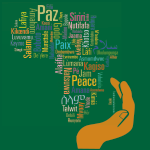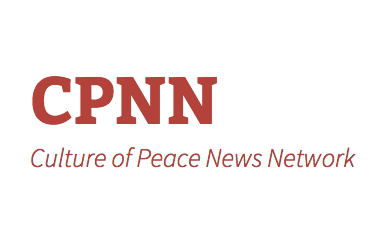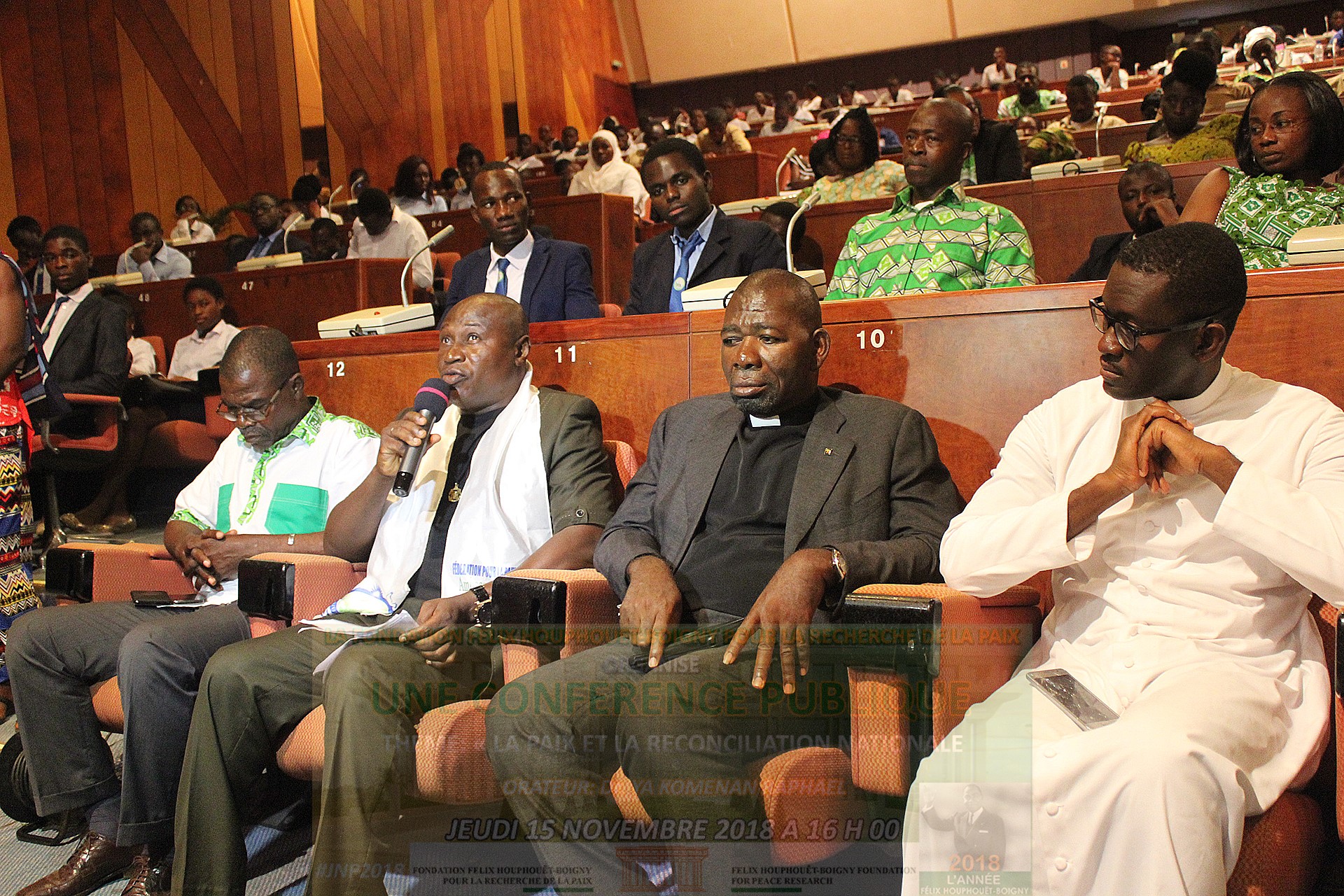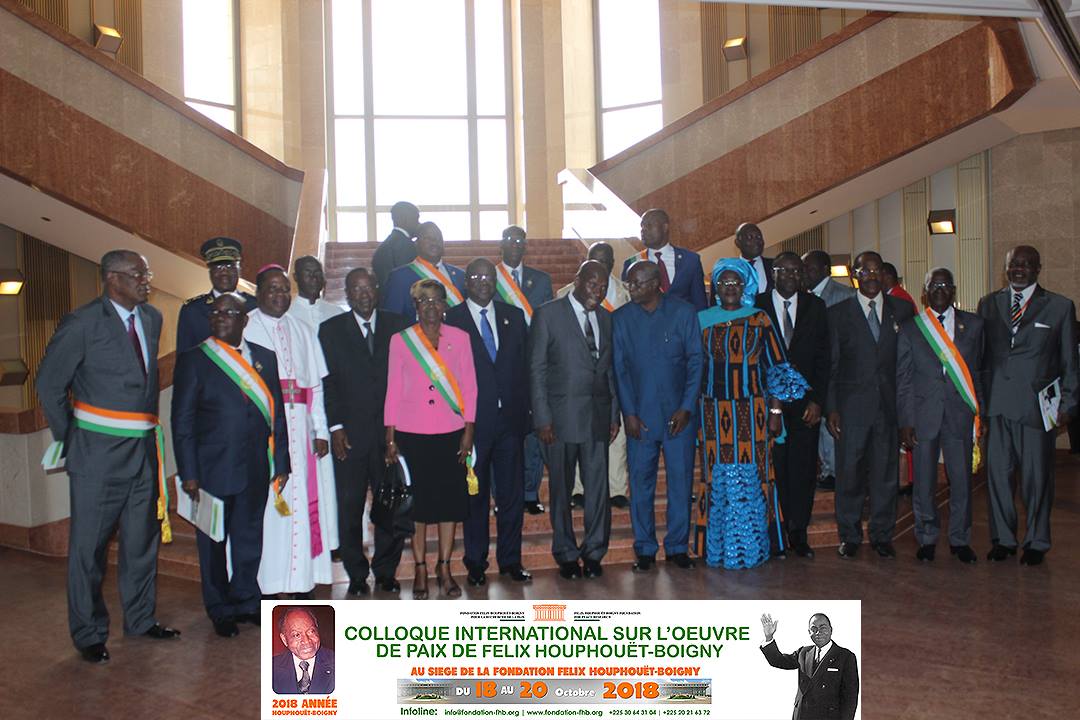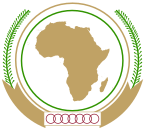-
Welcome to the
Network of Foundations and Research Institutions for the Promotion of a Culture of Peace in Africa
-
The Network's Meetings
News
CPNN (Culture of Peace News Network) bulletin of August 1, 2016
PEACE ED AROUND THE WORLD
History is not always reflected in the headlines of the mass media. Sometimes it is the "slow news" – events that are not considered newsworthy – that accumulate and change the course of history. A good example is slow but steady progress in peace education, which we salute in this month’s bulletin.
The website of the Global Campaign for Peace Education gives us a good overall view of the extent of peace education in the world today. One can begin simply with the list of their national and local endorsing organizations, who come from over 50 countries and all six continents.
This month we feature recent articles reprinted by the Global Campaign for Peace Education from around the world: from Myanmar, Bosnia, United Kingdom, Rwanda, Georgia, United States and the Seychelles.
In Myanmar, the Ministry of Education and UNESCO are jointly implementing the "Education for Peace and Development in Northern Rakhine State" project. Teachers, principals and education officers have been trained in life skills for peace and conflict transformation
In Bosnia, the United World Colleges of Mostar are celebrating their 10th anniversary. UWC Mostar was the first school having students from across the country being taught by the same teachers and in the same classroom, unlike the segregational educational system still prevailing in the rest of the country.
In the UK, Quakers will host a ground-breaking national conference for teachers to learn how to equip pupils to handle conflict in a constructive way and to develop critical thinking skills. Educationalists from more than 80 schools across Britain will attend Learning Through Peace at Friends House in London.
The Rwanda Peace Education Program is coming to a close after three years of building sustainable peace in communities across the country. The conclusion will be marked by a Peace Week that includes various activities to share the success of the program and encourage all Rwandans to be champions of peace in their own villages and families.
In Georgia, The European Intercultural Forum has just finalised the narrative report of their 1st training course in the frame of the Training Programme "Education for Peace – Developing Competences for Peace Education in the Youth Field". The project aims to strengthen the competences of youth workers and youth educators and empower young people to become pro-active agents of peaceful change via local community initiatives addressing societal conflicts.
In the US, the Ashland (Oregon) Peace Commission works with the city’s schools and their MindUp Curriculum which offers peace education tools that encourage listening and compassion and promote an environment of understanding, as well as with the Medford-based Resolve Center for Dispute Resolution and Restorative Justice.
The University of Seychelles has announced that it is planning to set up an international centre for peace studies and diplomacy with the expert guidance and experience of Seychelles’ founding President Sir James Mancham. The proposed professor of peace studies will provide both academic leadership and proven negotiating skills. The centre will be a hub of information and also a meeting place for practitioners and scholars alike. Conferences will be a feature of the centre’s activities. Under the auspices of the UniSey, it will offer a Master’s Degree in peace studies for local as well as international students, together with opportunities for doctoral and post-doctoral research.
Just to complete our tour of the world, we mention four other recent CPNN articles about progress in peace education in Colombia, Brazil, Japan and Ivory Coast.
The Colombia Minister of Education, Gina Parody, speaking at the meeting of secretaries of education from across the country, invited them to teach a new generation of peace, preparing children and young people to consolidate peace. Among her remarks was the following: "For the first time, the government has allocated a larger budget for education of our children and young people, that the budget for war. We are convinced that it is in the classrooms that the new generation will begin to rewrite the history of Colombia as a country in peace."
In São Vicente, Brazil, a team of educators is carrying out a program of Training for Peace Education of 60 hours for professionals from all the public education units in partnership with the Secretary of Education.
In Hiroshima, the Mayors for Peace Network organizes in partnership with the Hiroshima Peace and Culture Foundation and the Hiroshima University, a summer program that provides students with a general understanding of the nature and attributes of war and peace by illuminating various aspects of wartime experiences, including the atomic bombing of Hiroshima, and, at the same time, by exploring contemporary issues related to world peace in the era of globalization
In Yamoussoukro, Ivory Coast, the Deputy Director for Africa of UNESCO, Edouard Firmin Matoko announced the creation of a school for the Culture of Peace. Called the "Pan-African center for research and advanced training in the culture of peace", its objective will be "capacity building of decision-makers in the values of peace and citizenship".
Finally, there are two major events coming up where peace educators and others interested in peace are invited to come and advance their international links. The Congress of the International Peace Bureau, the oldest global peace network, founded in 1891/92, will take place at the end of September this year in Berlin, while the 9th international conference of the International Network of Museums for Peace will be held in Belfast in April 2017.
CPNN (Culture of Peace News Network) bulletin of July 1, 2016
PEACE IN COLOMBIA
The government of Colombia and the FARC guerilla movement have agreed on a ceasefire and plan for demobilization. The bilateral ceasefire and surrender of the weapons will begin with the signing of the final peace agreement (expected in July) and this last point will have a term development of 180 days. A monitoring group composed of delegates from the UN will be created by the FARC and the Colombian government to verify the delivery of the guns. Also announced was the creation of areas and camps for demobilized guerrillas and commitment by the authorities.
CPNN (Culture of Peace News Network) bulletin of May 1, 2017
MARCHING TO SAVE OUR PLANET
Two major mobiliztions to preserve the planet took place this month in the United States and Canada. Close to a million people turned out across the United States and Canada for the March for Science on April 22. A week later, at least a quarter of a million turned out for the Peoples Climate March.
At the main March for Science in Washington, D.C., the American scientist Bill Nye, an honorary co-chair of the event, delivered a speech to a crowd of tens of thousands in pouring rain. 'Show the world that science is for all. Our lawmakers must know and accept that science serves every one of us,' Nye said before shouting out, 'Save the world !'
For the Peoples Climate March a week later, over 200,000 people took part in the Washington, D.C. march and another 50,000 or so in 370 sister marches across the country. According to its national coordinator, ""This march grew out of the relationship building among some of the country’s most important progressive organizations and movements. . . . to pressure global leaders to act on climate change. There was a simple demand – act . . . act on climate while creating family-sustaining jobs, investing in frontline and indigenous communities and protecting workers who will be impacted by the transition to a new clean and renewable energy economy.""
If one were to map the largest turnouts, it would look almost the same as the map we published back in January for the women’s marches against the inauguration of President Trump, which, in turn was almost the same as the map for the election results.
The marches for science were appropriately set for April 22, which is recognized by the United Nations as Mother Earth Day.
The UN initiative came from Latin America, and, indeed, it was celebrated this year in most Latin American countries, including statements from the Presidents of Bolivia and Venezuela that linked it to the culture of peace and to socialism. In addition to Bolivia and Venezuela, we gave some details from celebrations in Mexico, Chile, Colombia, Honduras, Nicaragua, Panama, Peru and Argentina.
For example, in Honduras, public and private environmental organizations planted thousands of trees in urban and rural areas to raise awareness of the importance of caring for the planet, while in Argentina there were workshops, ecological activities and even the country’s first "bio festival" of music, held in the city of Rosario.
In addition to the science marches, there were many other celebrations of Earth Day across the United States and Canada. These included Earthday fairs with educational activities, tree planting and community environmental cleanups. Especially unique and appropriate was the earthday event in North Dakota, where the horseback riders of the Dakota Exile Healing Ride celebrated the "Sweet Corn Treaty" that occurred in 1870 with the Chippewa and Sioux tribes. They called for "sharing our homelands and responsibilities to the lands, and water as well as respect for each other’s cultures and traditions by sharing once again as Dakota did".
One would have hoped that Earth Day would be celebrated around the world and would indicate a growing consciousness for the culture of peace, given that sustainable development is one of its eight program areas. Indeed, some claim that these celebrations involved "a billion people." in "195 countries." Unfortunately, our survey of Earth Day activities around the world failed to confirm any large participation outside of North and South America.
Certainly, there is a growing consciousness around the world that we must act to save our planet, a consciousness that complements the anti-war consciousness that we have seen on the UN International Day of Peace. Although the consciousness is worldwide, perhaps it is appropriate that the largest mobilizations at this time are taking place in the United States, since it is the American empire that poses the greatest threat to the environment.
CPNN (Culture of Peace News Network) bulletin of April 1, 2017
WOMEN ON THE MOVE
Since women’s equality is an essential part of the culture of peace, we must appreciate the great mobilization around Women’s Day, March 8, and the annual meeting of the United Nations Commission on the Status of Women.
On International Women’s Day, women around the world celebrated by marching in more than 50 countries. The photo essay republished by CPNN includes images from Ukraine, Bangladesh, Australia, Nigeria, Georgia, Palestine, Spain and USA. Especially impressive was the mobilization in the United States where millions of women took part in a "Day without a woman." It was organized by means of social media in the same way as the women’s demonstrations January 21 in which over 2 million protested the policies of the newly inaugurated President Trump. We have not found any way to measure how many women participated by staying away from work or to what extent their refusal to shop led to decreased sales on March 8, but we provide links to many descriptions of the day in the mass media.
Women activists were featured by various international NGOs in March. The Coalition for the International Criminal Court presented women leading the fight for global justice from Colombia, Mexico, Philippines, Lebanon, Ukraine and Mali. Amnesty International celebrated the US mobilization of "Day without a woman" by publishing "eight women who are battling on the frontline to claim their rights, refusing to wait in the face of injustice." They came from South Africa, Canada, El Salvador, China, Afghanistan, Norway, Saudi Arabia and Iran. And Nonviolent Peaceforce presented a tribute to Joan Bernstein: "Joan was the heart and soul of the U.S. and Canadian chapters of NP for many years. She helped organize the founding conference for NP, and later the annual conference of North American chapters. She provided us with vision, inspiration, resources, skills — and the endless belief that we could rise to any challenge."
Women activists from around the world gathered at the United Nations for this year’s meetings of the Commission on the Status of Women (CSW). The meetings featured:
- The priority theme: Women’s economic empowerment in the changing world of work
- Review theme: Challenges and achievements in the implementation of the Millennium Development Goals for women and girls (agreed conclusions of the fifty-eighth session)
- Emerging issue/Focus area:The empowerment of indigenous women
They received a report from the UN Secretary-General’s High-Level Panel (HLP) on Women’s Economic Empowerment which identified seven main drivers of transformation:
- tackling adverse norms and promoting positive role models;
- ensuring legal protections and reforming discriminatory laws and regulations;
- recognizing, reducing and redistributing unpaid work and care;
- building digital, financial and property assets;
- changing corporate culture and practice;
- improving public sector practices in employment and procurement; and
- strengthening visibility, collective voice and representation.
Many of these points were addressed in the opening statement of the CSW by the Executive Director of UN Women, Phumzile Mlambo-Ngcuka.
In one of the many side events of the CSW, the International Institute on Peace Education and the Pasos Peace Museum urged women to use important existing UN resolutions as tools for achieving equality:
- UNSCR 1325 on Women, Peace and Security
- the Convention on the Elimination of All Forms of Racial Discrimination
- the Declaration on the Rights of Indigenous Peoples
Several speakers and reports pointed to Iceland as an example of a country where women’s equality is being achieved. To mark International Women’s Day, the government of Iceland announced that they will become the first country in the world to require companies to prove they pay all employees the same, regardless of gender, ethnicity, sexuality and nationality.
We conclude with the words of Phumzile Mlambo-Ngcuka, in her speech to the CSW: “The much-needed positive developments are not happening fast enough. . . . let us agree to constructive impatience.”
The Network Meetings

Links
FESA-UNESCO International Conference, December 12-13, 2016, Luena, Angola
Third Meeting of the Network September 11-12, 2015 in Soyo, Angola
Second Meeting of the Network, from September 21 to 24, 2014 in Yamoussoukro, Côte d'Ivoire
Network Creation Meeting on September 20, 2013 in Addis Ababa, Ethiopia
Text Resources
- Call for Papers HARIS 2 JUNE 2021
- Report of the 5th Meeting of Members of the Network held on 21 September 2019 in Angola on the sidelines of the Luanda 2019 Biennale for the Culture of Peace
- Activity Report 2019
- Program of the Luanda Biennale
- DRC the six-day war in Kisangani
- Insecurity in the Masisi in Eastern DR Congo
- General Report of the Houphouet Boigny Foundation International Conference, October 20, 2018
- RAPPORT FINAL DE LA CONFERENCE FESA-UNESCO SUR LE THEME "PREVENTION DES VIOLENCES ET PROMOTION DE LA CULTURE DE LA PAIX EN PERIODE ELECTORALE EN AFRIQUE" LES 12 ET 13 DECEMBRE 2016 A LUENA EN ANGOLA
- BULLETIN DE L’UNION AFRICAINE (UA) ET DE LA CORNE DE L’AFRIQUE (HOA) du 1er juin au 31 Août 2017
- LES STATUTS DU RÉSEAU
- RAPPORT D'ACTIVITÉS 2014 - 2015 DU RÉSEAU
- RAPPORT D'ACTIVITÉS 2015 - 2016 DU RÉSEAU
Welcoming Remarks
You are welcome to visit the website of the Network of Foundations and Research Institutions for the Promotion of a Culture of Peace in Africa.
The Network was created at the end of the Addis Ababa meeting on September 20 and 21, 2013 with a view to "creating a continental and sustainable peace movement capable of mobilizing African States, the private sector, African artists and leaders, international organizations and regional development actors as well as NGOs and grassroots associations". It is currently composed of 44 African and non-African organizations listed here.
You will find on our website articles, publications, photos and videos concerning the promotion of the Culture of Peace on the African continent. We also keep you informed about upcoming events.
